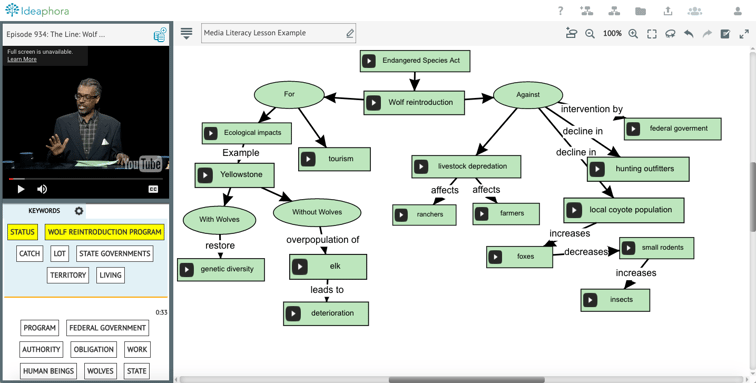Fake news sites. Post-truth politics. Media fragmentation. In the digital age, it’s arguably more important than ever for students to develop new literacy skills. These skills are critical for students to be successful not only in college and in future careers but also in civic and economic life.
According the National Association for Media Literacy Education (NAMLE): “To become a successful student, responsible citizen, productive worker, or competent and conscientious consumer, individuals need to develop expertise with the increasingly sophisticated information and entertainment media that address us on a multi-sensory level, affecting the way we think, feel, and behave.”
The organization defines media literacy as “the ability to ACCESS, ANALYZE, EVALUATE, CREATE, and ACT using all forms of communication is interdisciplinary by nature.” Media Literacy Now explains that media literacy encompasses many different approaches and types of literacies including digital literacy and citizenship, news literacy, information literacy and visual literacy.
Media literacy education supports the overall goals of Common Core State Standards and its ELA requirements. Among the skills students must develop are the ability to decode and comprehend texts; to analyze and evaluate texts for credibility, point of view, values, varying interpretations, and the context in which they are made; and to use media to create and distribute their own messages.
Educators can guide students in developing media literacy skills with the aid of concept mapping, which can help students see and understand relationships among sources, authors, topics, issues, information, and more. Using Ideaphora Classroom, students can access various digital media sources and add one or more to their map with direct links back to the material. Then, they can easily extract meaningful concepts from the sources and apply critical thinking to make conceptual connections in their visual map. In Ideaphora’s flexible digital learning environment, educators can use concept mapping in a variety of ways to address media literacy practices. For example, students can visually map evidence from digital content to answer essential questions around authority, bias, facts and opinions and make relevant connections among them. Or, students can create a concept map that compares varying interpretations on an issue from multiple sources – like the example provided in this post. Our good friends at BrainPOP provide a lesson on media literacy that includes having students create a map using its Make-a-Map® tool powered by Ideaphora to demonstrate their understanding.
If you’d like to try Ideaphora Classroom to help your students develop media literacy skills, sign up for our free classroom pilot program.

